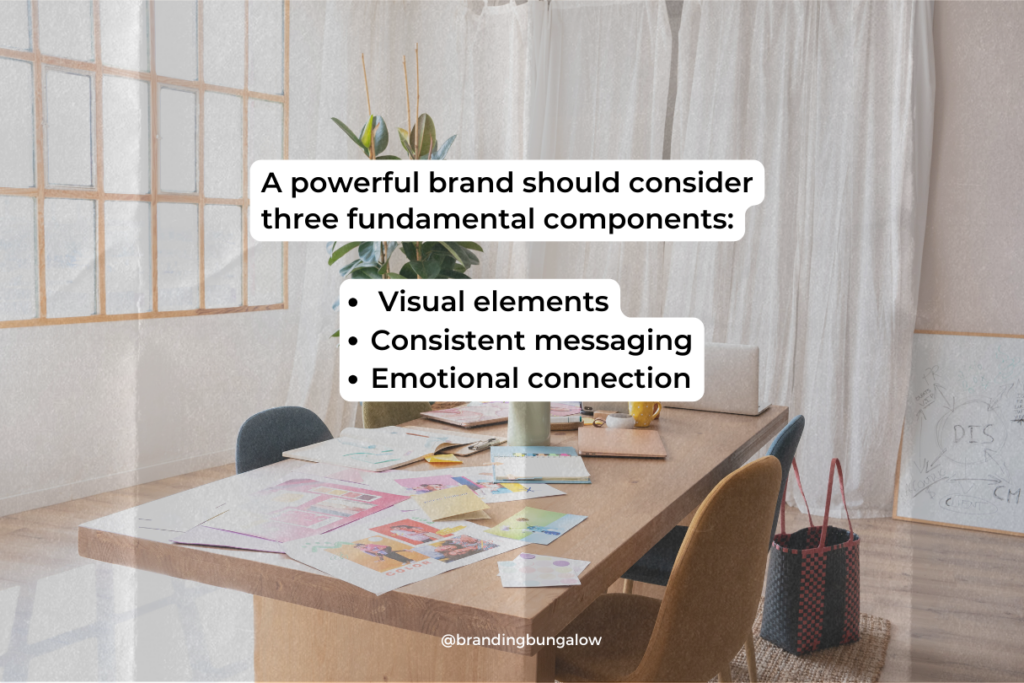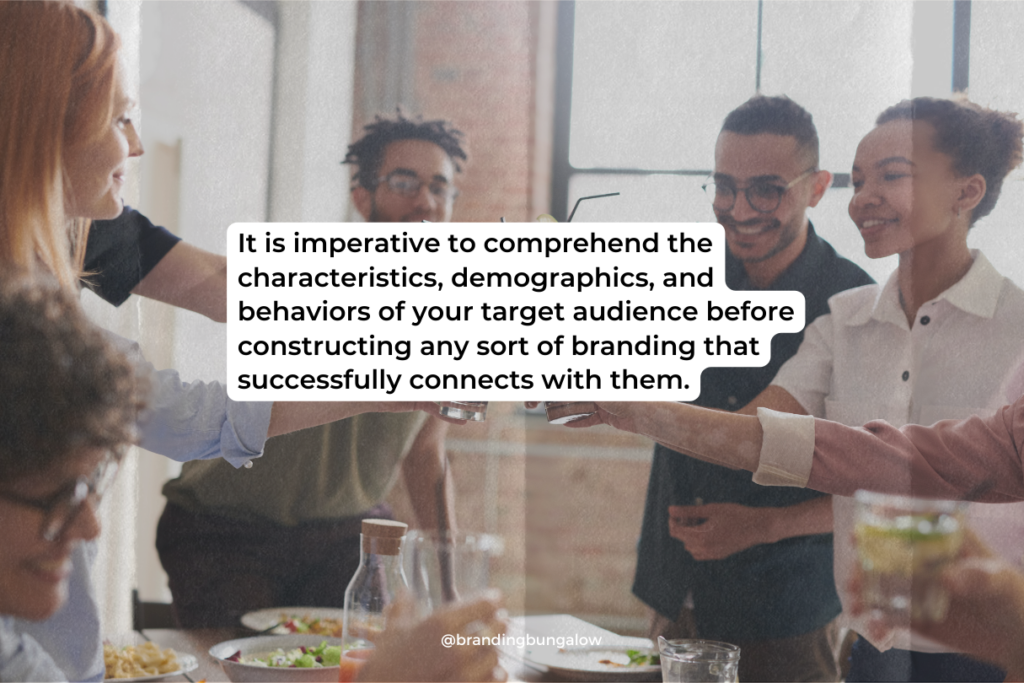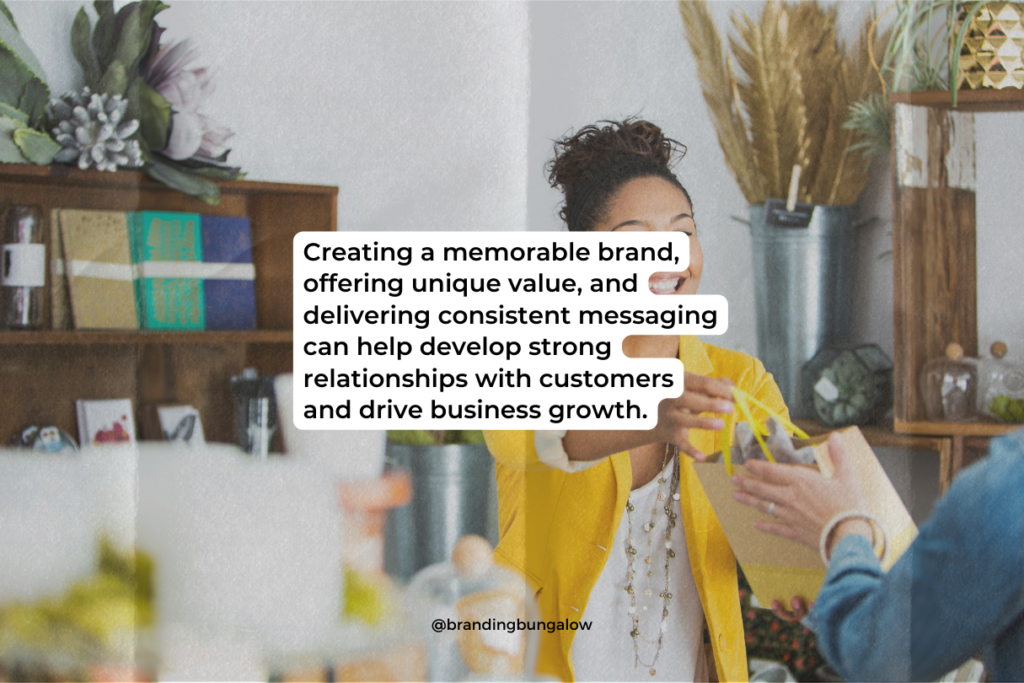Value of Branding in 2024: Maximize Your Brand Potential
Branding is an indispensable tool for businesses in the current competitive landscape. It can be used to help set your organization apart from competitors, strengthen customer loyalty, and expand market presence, all of which will take your business to a whole new level. Unlocking the value of branding enables customers to develop relationships with their favorite brands that they are more likely than ever before loyal to.
Short Summary
- Brand identity is a powerful tool for creating trust with customers and standing out in the market.
- Crafting an emotional connection, understanding target audience needs & crafting unique value propositions are key to successful branding.
- Brand management involves monitoring performance, adapting strategies to market changes & maintaining brand consistency across all channels for long term success.
The Power of Brand Identity

Strong brand identity is essential for any successful business. It works as a guiding light, helping your company stand out in the busy marketplace while leaving an unforgettable impact on customers. To ensure this happens, branding needs to be handled properly through elements such as: company name and logo visuals, mission statement, tone of voice, etc. These will help communicate the brand promise effectively thus building trust between you and your target audience.
Exploring the value of branding, we’ll consider its three fundamental components, which are visual aspects combined with consistent messaging plus emotional connection, all crucial when trying to develop a riveting mark that people remember fondly while being truly meaningful over time.
Visual Elements

Brand visual elements such as logos, color schemes and typefaces form the basis of a recognizable image for customers. It is important to have an identifiable brand identity in order to effectively communicate your message to them, so developing a style guide can ensure that all visuals associated with it remain consistent. When creating these assets, one must consider their target market, mission statement and any unique attributes. This will result in resonating visuals that truly reflect who you are as a business while providing visitors with an engaging experience.
Consistent Messaging
Establishing brand guidelines is the most effective way to cultivate a consistent branding message across all channels and touchpoints, earning your customers’ trust. Keeping this brand unified via these instructions will ensure that whether it’s through social media posts or packaging, advertising or marketing communications, people can easily recognize and prefer you over time. A steady flow of interaction with clients helps build long-lasting customer relationships while simultaneously strengthening your business’s overall image regarding consistency in branding.
Emotional Connection
Brands don’t just rely on visuals and communication to create successful connections. To strengthen the value of branding, they must also elicit emotional responses from their audiences in order to form loyalty. Establishing such a bond is essential for creating repeat customers, who become long-term brand advocates. Visual elements along with messages allow companies like Kellogg’s Rice Krispies or Allstate to effectively establish an emotionally appealing experience which makes them easily remembered by consumers.
Building a Strong Brand

Having analyzed the impact of brand identity, let’s now discuss constructing a strong one. To generate an attention-grabbing and resonant image for your target customers, it is important to understand their wants and preferences before developing an exclusive value proposition that leaves them with a lasting impression. Adhering strictly to these three central principles will help you create a powerful brand which won’t just intrigue consumers, but also resists fluctuating market changes. Let us take in details each of these significant components required when forming brands successfully.
Understanding Your Target Audience
It is imperative to comprehend the characteristics, demographics, and behaviors of your target audience before constructing any sort of branding that successfully connects with them. These are the people identified as potential customers who should receive your communication or content. Doing so will enable you to generate effective marketing tactics and messages that they can relate to, which in turn results in customer loyalty.
Consider the value of branding and keep an eye on your consumer base when creating brand-related tasks guarantees a stronger connection between yourself and those intended while also cultivating more faithful customers. Thus, all this activity contributes towards achieving better relationships with each clientele via tailored services according to their own needs, preferences & values associated!
Crafting a Unique Value Proposition
Your business needs to be able to stand out from its competitors and appeal directly to customers in order for it to succeed. Crafting a UVP with insight into your target audience will help you define what makes your brand unique and give them reasons why they should choose you over others. This is key in creating a solid identity that builds loyalty among existing customers, elevates awareness of the company, and contributes greatly towards expansion efforts. By taking time to focus on the value of branding and understand what sets apart your business from its rivals, then ensuring this uniqueness is displayed through effective branding strategies, success awaits!
Creating a Memorable Brand Experience
A good brand experience is more than a memorable logo or slogan. It encompasses each and every encounter with your brand, such as the initial introduction of products. Website/store usability, purchase process flow, delivery condition. And customer service post-sales support. With these high quality interactions across all aspects of engagement, customers form loyalty to your business that leads to long-term success for you.
To construct excellent encounters tailored specifically to consumers’ needs, emphasize personalized services accompanied by prompt response rates when addressing questions along with rewards given in return for steadfastness in patronage—all this helps build strong relationships between yourself and those loyal clients promoting growth within your company’s future.
The Role of Brand Management

Brand management is an essential practice for businesses in order to sustain a consistent brand presence and remain competitive. It involves evaluating the performance of your brand, adjusting according to market shifts, as well as preserving uniformity across different channels. By focusing on these details diligently, you can guarantee that your business’s image remains authoritative and successful long-term.
Let’s investigate each one of these three aspects more thoroughly so we can learn how they help companies stay ahead of rivals while navigating such constantly changing marketscape dynamics.
Monitoring Brand Performance
Maintaining a close eye on key brand metrics is necessary for identifying areas of improvement and making informed decisions. Setting measurable objectives and examining your achievements against them helps determine how successful you are in terms of branding. Keeping track of these aspects can ensure that the efforts put into marketing achieve satisfactory results for your business.
Some important performance indicators to monitor consist of: customer satisfaction, market share, sales as well as brand recognition. Paying attention to such aspects will make sure that any actions taken when it comes to promoting bring desirable outcomes according to what has been established from within the company itself.
Adapting to Market Changes
For businesses to remain successful and competitive in today’s ever-changing market, they must be agile. This means keeping up with industry trends, having a diverse portfolio of products or services, as well as leveraging technology to their advantage.
In order for brands to maintain their relevance and effectiveness over time, it’s vital that brand performance is regularly assessed. This way strategies can easily be adjusted so the business continues progressing even when faced with market instability. By taking such measures organizations are able to create resilient branding which will serve them well in both current conditions and into the future.
Maintaining Brand Consistency
Having a unified brand image across all of your channels and customer touchpoints is essential for establishing trust with consumers. To maintain consistency, create comprehensive brand guidelines that you can continually reference to ensure the message stays intact, this will help make your business more recognizable and increase loyalty among customers. Building a consistent brand identity lays down an important foundation in creating lasting relationships with clients as well as driving growth within your company.
Developing a Winning Brand Strategy

Developing a successful brand strategy is essential for the growth and success of your business. It’s necessary to set objectives, make sure they align with overall goals, and take advantage of partnering opportunities that boost your branding potential. Focus on these three fundamental aspects in order to create an effective plan which can produce results while pushing forward progress.
When crafting this winning brand marketing approach it’s wise to consider each element carefully as they contribute greatly towards achieving ultimate outcomes successfully. From setting clear aims through managing partnerships correctly, all elements are important factors needed for achieving optimal performance under any given circumstances related to Brand Management or Business Strategies going forward into the future endeavors ahead!
Setting Clear Objectives
Creating tangible, measurable and achievable goals for your brand is necessary in order to guide marketing activities and measure outcomes. These targets provide clear guidance so that the team can all be working towards a unified ambition.
Examples of objectives could include enhancing customer loyalty, promoting recognition of the brand itself or strengthening sales revenue. These are quantifiable ambitions which allow you to evaluate progress effectively while constantly refining strategies based on data-driven conclusions.
Aligning Brand Strategy with Business Goals
Creating a successful brand strategy should always be in line with your business goals to ensure that you’re able to build and maintain loyalty, recognition, and growth. This means focusing on understanding the target audience while constructing an original value proposition for your brand, as well as creating a memorable experience for them. Having these elements together will allow you to formulate a compelling message behind the brand so it is connected with customers, which helps support the aims of your organization.
Leveraging Brand Partnerships
Brand alliances can be a real power-boost for businesses by connecting with companies that have similar goals. This helps expand reach and visibility, helping improve your reputation as well as driving growth in new markets. It provides opportunities to collaborate on projects which will benefit both parties’ customers.
It is essential when selecting brands to partner up with that you are aware of what their values and aims are so the relationship turns out mutually beneficial – this way everyone gains something from teaming up together!
The Long-Term Impact of Good Branding

Good branding creates a sustainable competitive advantage that helps businesses grow and reach new heights. It has far-reaching, long-term effects which include fostering brand loyalty, increasing recognition of the brand in consumers’ mindsets and driving business success. To achieve all these goals, you must create strong branded practices to build your reputation as an established entity within your industry or market. By utilizing good branding principles along with excellent product/service delivery, it’s possible to make customers loyal to the company while providing great customer experiences simultaneously, ultimately resulting in positive growth for any business venture!
Fostering Brand Loyalty
Creating a memorable brand, offering unique value, and delivering consistent messaging can help develop strong relationships with customers. This leads to higher customer loyalty that increases the likelihood of them spreading positive word-of-mouth reviews about your business, which will drive in new patrons and foster continued growth for you over time. Branding is essential as it builds an atmosphere around your company where people become loyal followers who continually come back for more experiences from you rather than somewhere else due to their enjoyment of what they already received from you previously.
Enhancing Brand Recognition
Creating a recognizable and remarkable brand is vital to stand out in competitive markets and draw new customers. Establishing an impactful, unified identity will make your business more visible and memorable for buyers, making it easier to choose among others brands.
Developing brand recognition can bring many advantages: attract fresh clients, enhance trustworthiness with current shoppers, boost sales & profits, and form a favorable image of the company.
By focusing on awareness-building, you can build up a distinguished reputation that connects well with your target audience.
Driving Business Growth
Through implementation of strong branding procedures, you can generate greater brand value and contentedness among employees that leads to sustainable growth. Becoming more renowned and reliable increases the chance for your organization to acquire higher quality personnel, which furthers progress in achieving success. By actively pursuing robust branding methods while being agile enough to adjust according to market fluctuations, an enduring brand is formed with a capacity for longevity through prosperous times as well as tribulations.
Summary
Businesses that want to thrive in today’s market must take advantage of the potential held within their branding. Through developing a prominent brand identity, constructing an effective and strong brand image, creating winning strategies for the long-term success of their brands and understanding how crucial good branding is – businesses can make great strides with customers’ perceptions while furthering themselves along the path to excellence. With strategic utilization of your company’s distinctive traits via smart use of its own unique brand, you too could establish lasting connections with those who will benefit from what it has to offer. This utilization is the value of branding.
Frequently Asked Questions
Why is the value of branding important?
Brand recognition is extremely important for a company since it sets them apart from the competition and builds trust with customers. Branding allows firms to maintain an identity that resonates throughout their marketing initiatives, making sure they remain consistent across all channels. Having clear values established will ensure branding stands out to others. Ultimately, creating brand awareness helps craft deeper connections between companies and consumers alike. This is why having effective strategies put into place makes such a difference when trying to succeed as a business venture.
What does value of branding mean?
The brand value of a business is what its customers believe it to be worth. It is the monetary amount another company would pay for utilizing their logo, branding and identity. This sum incorporates the products and services given plus how clients view them. The recognition that comes from owning the branded product or service enables businesses to earn more revenue based on customer perception, making a strong brand paramount for success in any industry.
What are the key components of a brand identity?
A brand identity must include a set of visual components such as logos, colors and typography to generate recognition. These visuals should be used across all marketing efforts so that the consumers form an emotional bond with it. The messaging behind this branding should specifically cater to your target audience in order for them to create those connections with your brand. Customers form a memorable impression when these elements work together cohesively, leading to successful results in terms of both sales numbers and consumer loyalty.
What is a unique value proposition?
Your target audience should be able to understand why your business is the better option when compared with other competitors. To accomplish this, you need an effective value proposition that showcases the unique features and advantages of choosing your company. This statement has to be concise yet clear in order for it to have its desired effect on potential customers. It must also reflect their needs specifically so they can see how selecting you would provide them with more benefits than any other competitor could offer.
How can businesses adapt to market changes?
Businesses can gain an edge in the market by tracking patterns, diversifying their offerings and utilizing technology. Through active measures, they can remain prosperous even when markets fluctuate. Keeping a close eye on trends is necessary for businesses to stay ahead of competitors, making sure that products cover a variety of needs while leveraging tech solutions whenever available to enhance operations or reach new customers.
Recent Blog Entries
Discounts to Dubsado CRM, Helcim Payment Processing and...
Brand audits can save your business' sinking marketing ship.
What's happening to Coke and what you can learn from it.
Shop Products
Create a personalize brand board by taking elements from our 3 signature brand board templates.